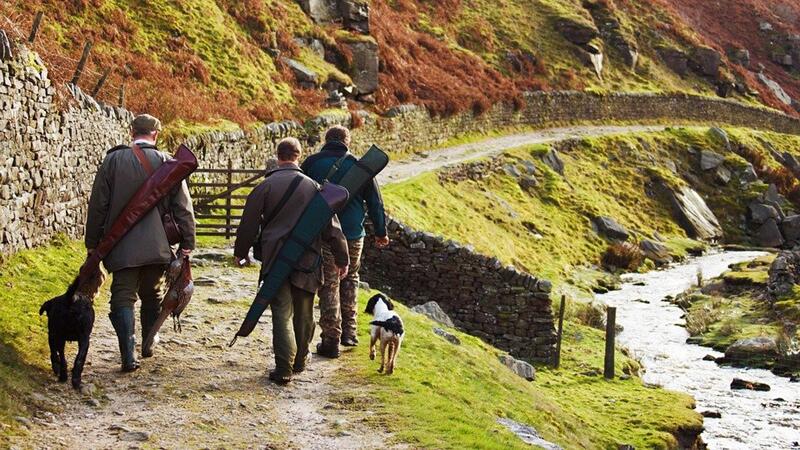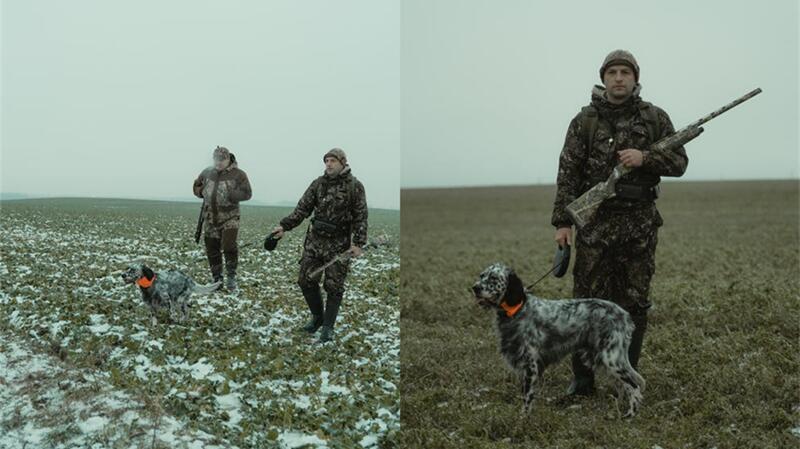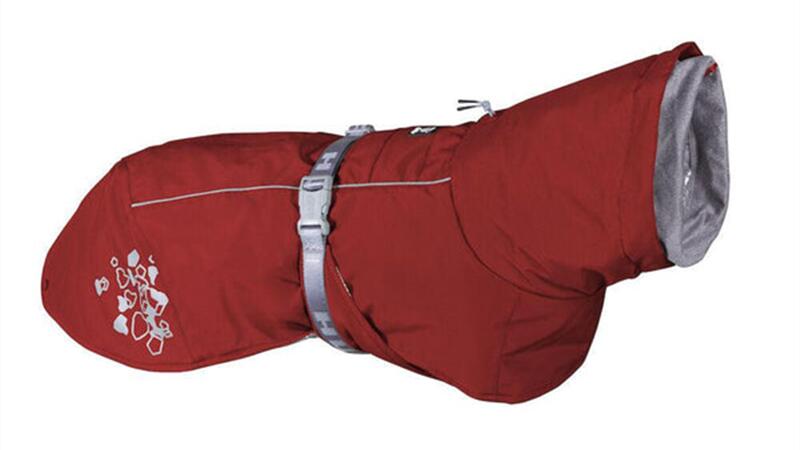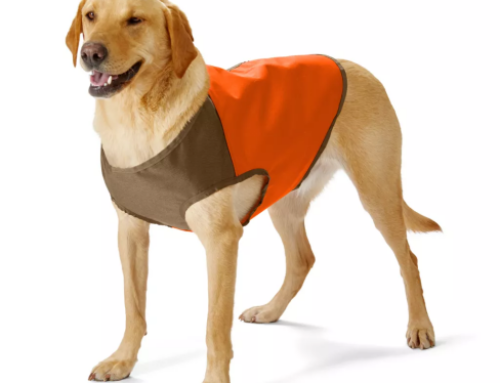Happy to share this article about hunting with dogs today. This article mainly examine the long journey dogs have taken to become the hunters they are today, dating back tens of thousands of years. Then we’ll move into what breeds are best for hunting and which hunting strategies call for the use of canine aid. We’ll wrap up by giving some quick tips on training your versatile pet. Finally, we’ll show hunting dog suits made by Bowins for hunting dogs.

Are you ready to jump into the action? We should start by taking a look at how dogs began hunting in the first place. Hunting has been around as long as man has. It is believed that hunting dogs were in use about 20,000 years ago . But as man and hunting evolved, so did dogs. Nearly 9,000 years ago, man began harvesting livestock and domesticating it. At this time, hunting became less necessary and dogs took on the role of overseeing the animals instead of hunting them. Their strong sense of smell helped them recover stray flock members and discover predators.
As hunting became a sport rather than a life duty, the role of dogs continued to evolve. Hunting dogs were developed to track, point and set game for their masters. By 6,000 years ago, pointers, shepherds, mastiffs, greyhounds and wolf breeds were the prevalent hunting dogs, as they are documented in cave painting as workers hunting with their masters. From these five breeds, man began to look for special traits in dogs and use them for different needs. This is when breeding began and the number of dog species began to grow.

Today, dog hunting is almost entirely for sport, with the exception of subsistence hunts — isolated Alaskan families, for example, use dogs to help them hunt for food. In the end, the history and evolution of hunting dogs goes hand in hand with the evolution of man.
Today, the number of dog breeds has expanded, but there are still a few select breeds that are regularly chosen for hunting.
According to research, dogs possibly date back 135,000 years. Just like humans, dogs had to make their way to the Americas from other lands. How did they do this? It is believed that dogs crossed the Bering Sea to what is now Alaska sometime before 9000 B.C. Looks like the United States has Eastern Asia to thank for its bountiful population of man’s best friend
While any dog could prove successful to a hunt, there are five types that seem most popular among sportsmen.
- Retrieversare easy to train because they have long attention spans and are considered very obedient and intelligent. Most often, retrievers are used in waterfowl – usually duck — hunting. Their soft mouths are a great tool here, allowing them to delicately handle the game. These athletic dogs love the water and have webbed toes that enhance their swimming abilities.
- Pointersare best known for the stance they take when they approach prey. This dedicated dog will go ahead of the hunting party, using its strong sense of smell to track the game. Eventually, it will lead the hunter to the animal by using its body to point toward the prey. Pointers are known for athleticism, intelligence and dedication. They’re especially beneficial because of their versatility, often able to master many different techniques of hunting.
- Settersreceived their name from their patient method of hunting. They instinctually follow the scent of the game and, instead of attacking, simply get close and crouch (or set), keeping the prey trapped for the hunter. Setters were bred to carry the best characteristics of pointers and retrievers, so, like their canine ancestors, they’re athletic and motivated. When hunting for long periods of time or covering vast ground, setters have the stamina to keep up.
- Spanielsare the smallest hunting dogs. Their size, combined with their thick coats, makes them great companions when game may have fallen or taken cover in thick brush. They possess intelligence, versatility and obedience, making them ideal hunting candidates. Their soft mouths, like retrievers, allow them to retrieve prey without causing any damage.
- Hounds, which are more commonly used by police and investigation agencies, have especially keen senses of sight and smell. They are extremely handy in tracking game.
You’ve read about the different kinds of dogs, so check out the next to see what role each dog plays in a hunt.
What’s the most popular breed of dog in the United States? Turns out that Labrador Retrievers’ gentle, outgoing and friendly personalities make them perfect for both families and hunting. It’s estimated that more than 150,000 families have brought this breed into their household.
We’ve gone over the different types of dogs used in hunting, but how exactly does hunting with a dog work?
The following four categories are the most common forms of hunting:
- Sight hunting:Dogs are especially useful in sight hunting because the game has yet to be discovered. It’s known to be in the area, but hasn’t often come into open view. The aid of a dog’s sense of smell could reduce the amount of time it takes to locate prey.
- Stand hunting:Dogs aren’t as useful in stand hunting (a common method of deer hunting), in which the hunter picks a location and waits there for animals to expose themselves.
- Stalking:Hunters track down an animal that they can see but is too far away for a clean shot. They slowly move toward it, trying not to be seen or heard. A dog might not be the best companion here because it may not be quiet enough.
- Driving:A group of hunters will intentionally make noise in hopes of scaring their game and forcing it out into the open. This method is very appropriate for hunting with dogs.
Dogs don’t just magically become great hunters — you have to train them. Check out the next page for tips on training hunting dogs.
Few animal species are better understood than dogs. Through research, scientists have been able to pinpoint amazing details about how dogs became the species we love today. It is almost certain that dogs evolved from the gray wolf — all dogs, in fact, can probably be traced back to a small pack of female wolves that lived in East Asia.
Dogs are a rare breed of animal in the sense that they choose to serve humans — they’re known for loyal and unconditional affection for humans, which most other animals don’t have. This instinct to do what we tell them to makes dogs some of the easiest animals to train.
Here are some on the most common training methods for hunting dogs:
- Conventional:This is very basic training for obedience commands and usually isn’t sufficient enough for a practicing hunting dog. It serves as a foundation, but more intensive training should follow.
- E-Collars:Electric shock collars punish dogs for disobeying commands. Timing is important for this method to work correctly, though, so an experienced trainer should execute the shocks.
- Positive reinforcement:Rewarding good behavior teaches dogs to associate it with positive results. This is a method that relies on the dog’s ability to learn.
- “Dog whispering”:Dogs evolved from wolves, right? So it’s natural to take a wolf-pack approach to training them. If you establish yourself — the trainer — as the leader of the pack, the dog will instinctively follow your lead and become submissive.
Keep in mind that any of these methods can be combined to achieve specific results. And the manner in which you train your dog is important, too. You should always be flexible, consistent, fair and positive . These qualities will help the dog succeed.
We all know the saying, “You can’t teach an old dog new tricks.” But is that really true? Probably not. Dogs’ brains are not as complex as the human brain, but they work similarly. Dogs can learn new tricks after they’ve passed puppyhood — it just may take more practice. At a young age, they can pick up multiple tricks quickly, just as children learns the most in their first five years of life. Hey, if that 60-something can master Facebook, you shouldn’t give up on teaching your 8-year-old dog to roll over.

Now we would like to recommend one kind of hunting clothes for dog designed and made by Taian Bowins Garments Co., Ltd. suitable for hunting with dogs. The hunting suits are always necessary to help your dog hunt for long periods of time, keep it warm, and bring the harvest of your hunting season. The following are the details of the hunting clothing made by Bowins.

This model is particularly warm, the shell fabric is treated with fluorine-free DWR water-repellent treatment, the fabric has been tested for safety, non-toxic, and meets the OEKO-TEX standard. There is a warm warp knitted fleece hood that lifts up to warm the dog’s ears and head. The jacket protects the most important thermogenic muscles, as well as the neck, abdomen and ribcage. The pleasantly soft, slightly pliable material does not restrict mobility, even on sensitive dogs. The belly of the jacket is a hot fabric to better reflect body heat, and the fit is designed to cover the cold-sensitive belly as much as possible. Effective 3M reflective channels and large reflective print improve dog visibility in the dark. The adjustable channel on the back, as well as the adjustable part of the hood, are placed inconspicuously on the inside of the jacket. A snap button has been added to the back hem to fold the protective back hem under the jacket. Soft, warm 140g insulation is used padded the jacket. Different sizes are available for your different breeds of hunting dogs.
As a professional functional clothing manufacturer, Taian Bowins Garment Co., Ltd. has been focusing on the design and manufacture of professional hunting clothing for 15 years. That’s all we have about how to hunt and hunt with dogs
During hunting activity. If you want to learn more about hunting clothing, please visit our website. Bowins will wholeheartedly provide you with high-quality service.

